
I’m stopped at a traffic light at 210th Street and the Grand Concourse in the Bronx, the northernmost borough of New York City. The young woman in the driver’s seat of the car next to me is holding up a large hand mirror and brushing her hair. We both wait for the light to change from red to green. She’s in a small Honda. Fifty to sixty young men speed by on unlicensed dirt bikes and ATVs, none of them street legal, in the opposite direction, with a high-pitched grinding of gears and lots of blue smoke. Some of them are doing wheelies on this, the first 80-degree day of this year in New York City.
I’m at the light for 60 seconds, thinking about memory and whether or not you can really go back in time or place. I have been driving south from a trip to visit the house I grew up in, ten miles north, in Yonkers. We lived in two different houses in that neighborhood. A few miles south of us, also in Yonkers, was my parents’ first house in the suburbs, a two-family on Hildreth Place, just a few blocks north of the house where my mom’s parents lived. It struck me that my family, going back two generations, had simply moved north, one short hop at a time, starting in lower Manhattan in the 1920s.

My father grew up poor. He was born on the Lower East Side of New York City in 1922. His parents met in the city, but were both originally from Greece. His father, my grandfather, left home when he was 13, when HIS father, my great grandfather, gathered his five kids and said “I can feed only four of you. One of you has to go.” They were living in northern Greece and it was still under Ottoman occupation. My grandfather was the oldest, so he left home. We don’t know much about what happened along the way, but we do know that he went to Constantinople, rolled cigarettes for a living, ended up in Argentina and finally landed in New York City, all before the age of 20, all by himself.
He worked at the Oyster Bar in Grand Central Station for 40 years, shucking clams and oysters. That is how he supported his wife and three kids through the Great Depression. They moved to Inwood, at the top of Manhattan, when the tenements there were brand new. Landlords would offer a month of free rent to get tenants, who would move in for a month or two and then leave. My dad and his brother were in the streets a lot, but they got a good education at the public schools, despite the grinding poverty. My dad remembers eating mayonnaise sandwiches. He built a shoeshine box and made some money that way. I still have that box.
They eventually settled into a big apartment on Riverside Drive and Dyckman Street, where his father lived and died and his mother lived for 50 years. We would visit them a lot and I would play in the asphalt playground across the street. My grandparents, along with a bunch of other Greeks, would rent these broken-down farmhouses in the Catskills every summer for a couple of weeks. That’s where my father met my mother, at some point in the mid 1940s. Her family was slightly better off than his and they lived on the Grand Concourse, in the Bronx. My mom’s father was an orphan and had left Greece, like my other grandfather, alone at the age of 13. He came to this country on a steamship, taught himself English, and worked in bars, hotels, speakeasies and restaurants for 50 years.
He moved his family up to a small house in Yonkers, where they also lived and died. They were on a dead end with dozens of identical row houses. Across the street was a cyclone fence with man-sized holes in it, a short strip of trees, then a steep slope covered with grass and more trees at the top. This formed one side of the Hillview Reservoir. My grandfather used to take me walking there as a kid. We would reach the small utility road at the top, look at the water through another fence, then I would roll all the way down, like a log, while he followed.

My dad knew at an early age that he wanted more than the dead end of life on Post Avenue, in Inwood. He was the first in our family to go to college. He worked three jobs, went to graduate school and became an engineer. The Great Depression and that neighborhood scarred him permanently, but it did not break him. After he married my mom, in 1948, they got their first apartment, on 163rd Street, in the Bronx. It was not far from where her parents lived on the Grand Concourse. This is where my brother was born. They, along with my mom’s parents, moved north to Yonkers in the early 1950s. I was not around for their discussions on where and why, but they were part of a larger exodus from the city.
People wanted more space, they wanted less crowded schools, they wanted yards. They wanted to get away from the lives they had been living. A move out of the city then was a move upwards in social class. A yard, a car and a garage were a big deal. The goal was to escape the tenements. This is when Levittown was built, out on Long Island, for returning World War II vets. Levitt & Sons built other planned communities, based on lessons in mass production that Bill Levitt learned while in the Navy’s Seabees. The firm would later come to be associated with discriminatory practices and racial segregation, but for decades they were – and still are – considered the prime architects of the postwar planned communities.

Suburbs have been around as long as cities have been, since ancient times. They have existed in eastern and western culture and probably in the psyche, as well. Since the earliest human settlements, some people have lived in dense clusters and others have lived in rural areas. Other people lived on the edge of cities or were engulfed by cities. Some people moved between both worlds, but lived in neither. Modern suburbs sprang up during and after the industrial revolution, after some of the people who had moved to the cities wanted to leave them for a better quality of life. The cities then, in the 19th century, were dirty and dangerous industrial areas, as much of New York City was at the start of the 20th century.
People were not moving to the exurbs, which are beyond the suburbs. They needed to remain close to the city, but they wanted more space and cleaner air. It ties directly into that overused term, “The Great American Dream,” which is really about upward mobility. In America, we have traditionally steered clear of discussions on class. Americans always push the idea that, with a little hard work, you can overcome the boundaries you are born into, whether they are physical, mental or circumstantial boundaries. We can debate the accuracy of this at some other time, and there are examples that both support and refute this idea. Still, a dream is a powerful thing and it’s best to believe in it and to try to make certain that we can create opportunities for the next generation, no matter what came before.
I don’t think it was a conscious thought process that motivated my parents to leave so much as it was a natural yearning for something they never had. Something that looked much better than what they were living in at the time. Yonkers made sense. It was close to the city, where my dad and my mom’s father still worked. There was decent public transportation and you could still visit all the relatives in the city easily. Much of the housing stock was new, as little had been built during the war. Small commercial areas opened, with strips – not to be confused with “strip malls” – that would often contain a delicatessen, a dry cleaner, a bakery and maybe a stationary store. They were all mom-and-pop operations at the time. The first shopping mall I can remember was the Cross Country Shopping Center, but I’m jumping ahead here.

Before I was born, my parents moved another few miles north, to a dead end street in a neighborhood called “Mohegan Heights.” All the streets took their names from Native American tribes. At the base of the hill was an Aunt Jemima’s Pancake House. The elementary school was a seven-block walk down leafy streets, assuming you cut through a neighbor’s yard. It was seven blocks farther if you didn’t.
They bought a small Cape Cod style house that had a leaky basement. It took my father a few years to fix that leak. My parents must have been proud and happy to finally have a house of their own, along with a yard. The back yard had an apple tree that I used to climb. I didn’t appreciate what a big deal this was at the time, but I do now. When I was a little older, my mom would sometimes leave me at the house when she drove to the train station to pick up my dad, probably when she needed to talk to him privately. I was terrified to be alone in that house and would hide under the bed. Even then, I had a vivid imagination.

Tuckahoe train station, on the New York Central’s Harlem Division, was a 15-minute walk down a steep hill. I found out not long ago that New York Central built the incredibly long concrete stairway that went from the base of the hill to the top. That was to encourage people to live in this suburban community. New York Central eventually became Penn Central, which became Metro North, but the tracks remained the same. Some people drove into the city every day, but most took the train. And it was mainly men who did the commuting. The women stayed at home and raised families. That was just the way it was then in our suburb and in most others.
I was born in New York City, but carried away to this world after my first day on the planet. We did not live outside the gates of a medieval city, as the original suburbs had essentially been, but we may as well have. From an early age, I knew that New York City existed, as we would drive down to Inwood and then the Upper East Side to visit relatives. But we always went home when we were done. I did not think about it much. New York City was so big that it was a psychic presence as much as a physical one. It was just there, not far away, but impossible for me to get to on my own for many years. It was off limits. As soon as I got a bicycle, my best friend and I would ride to other neighborhoods and down to the malls. We would travel between the little islands of suburban interconnectedness on our bicycles.
My whole world was in a tight circle on that hilltop in Yonkers. It eventually grew bigger, but that was enough for me when I was young. It was not the same experience that kids in the city had, nor was it what kids in the country had, or kids by the ocean, for that matter. It was what I was born into – a classic postwar suburb.
We had TV and air conditioning, yet we kids spent much of our time outdoors, jumping fences, climbing trees and roaming the neighborhood backyards. It must have felt very different for my parents, who had grown up in tight apartments and had to sit on stoops for a dose of the outdoors. They seemed to enjoy sitting at home in quiet and comfort. Social isolation was not onerous to them. It may not have been a thing at all. They were busy. They were working and raising kids and, besides, they had the telephone, which, you could argue, made the suburbs supremely tolerable.
The phone and the automobile went hand in hand with the suburbs. We were not far from the supermarket, but we never walked the mile or two that it took to get there. It was not even a second thought. We drove everywhere. You drove so much that you got to know intimately every little rise and dip and curve on every route to anyplace that you were going. At least, that’s the way it was if you were a little kid in the back seat with your head out the window like a dog.
We all watched the same three networks and read the same two or three newspapers. Magazines arrived in the mail. We got letters from Greece. I played and went to public school. They had a dirt field where the local kids gathered every day. There was a baseball diamond, a lot of dirt, and a huge backstop at one end with a hole worn into it from balls being thrown at it for decades. Life had a routine quality to it that seemed like it would go on forever. Some of my fondest memories are of lying in a hammock in the backyard, reading books.

When I was 10, we had move to the town of Princeton, New Jersey, for my father’s job. It was another suburban street, although it was closer to the town center. I was able to ride my bike easily to the newspaper store to buy comic books. I could go in the other direction, to the shopping center, where I bought darkroom chemicals. It was screamingly dull and lonely for a kid who had been ripped away from his whole life on top of a hill in Yonkers. I would take long bike rides into the country and read a lot of books. It was a solitary existence and I was thrilled, three years later, when we moved back to Yonkers, into a house on the opposite side of the dead end where I had grown up. This was just in time for my adolescent years of smoking weed, playing in garage bands and going to high school.
My best friend and I began to venture into the city, . We would take Metro North. If I wanted to keep it quiet from my parents, I would take a bus to downtown Yonkers, transfer in Getty Square, take another bus to the IRT’s 1 train, at 242nd Street and Broadway, and ride that all the way to Times Square or Christopher Street. Once there, we would walk around Greenwich Village and try to look nonchalant. We had no money, so that’s all we could do. But we were in the city! That was enough. That was the thrill.
The glamour, the excitement and the energy of New York City were enough. They were visceral. When I went away to college, 200 miles away, it felt as though I were missing out on something. Something at a deep emotional level. I lived in the town of Cambridge Massachusetts for four years. Cambridge is an idyllic little bubble. It has many of the amenities of a large town or a tiny city, yet it feels suburban, especially once you get a block or two off the main drag. I always knew that, back in the city – and nobody from New York ever calls it anything but “the city” – stuff was happening. I wasn’t sure what was happening, but I knew that stuff was happening and that I was not part of it. I was not plugged into that big beating heart between the Hudson and the East Rivers.
There never were any suburbs in Manhattan, not in my lifetime, at least. And I never wanted to go back to the suburbs. They were a good place to grow up, but I always knew that the big city was not far away. We would go and visit my grandparents, my uncle, and my friends who lived there. The city was always calling to me, whether I saw it that way or not. It was always like a great magnet.
After college, I lived at home for a few months, then moved into the city. There was no question that’s what I would do, no planning or weighing of options. I had a girlfriend and got a place in the city. I would then visit my parents on holidays. They seemed to accept that I wanted to be there, but they must have thought it was to build a career. In reality, I just wanted to be in the city. We grow up where we grow up and we often have no choice. I chose to flee the suburbs at the first chance I got.

I was never one for planning ahead. I was now living in the kind of tiny apartments that my parents had spent their lives trying to escape. I loved it. Everything was walkable and, if you rode a bike, anything felt possible. I saw music, I worked, I played in bands, I had fun, I got into trouble. It was all accessible. In the meantime, my parents were now at a comfortable distance and I’m not sure how they handled it. I don’t think they ever missed living in the city, but I really don’t know.
After my mom died, before the attacks of 9/11, my dad was alone in that house. She did not live long enough to see the 21st century and the dissolution of much that I held dear about this country. My dad lived another 8 years. He sold the house and moved to a garden apartment in a small town nearby. I tried getting him to move back into the city, but he could not bring himself to do it, just as I can’t see myself moving back to the suburbs. At times, though, especially as I get older, the quiet of the suburbs does call to me. Living space, a garage, a garden – they are appealing things. The city has changed, in my opinion, for the worse. We are long past gentrification in Greenwich Village. In fact, some aspects of city life now feel suburban – the homogeneity, the lack of imaginative thinking, and and the sameness of everyday life. The suburbs may have moved themselves back to surround me.
Of course, Greenwich Village, where I have lived for 40 years, was once a suburb of the original New York City, a little village in the country. In the Village now and in much of Manhattan, the block you live on and the few blocks around it feel like a small town, more so than the suburban streets where I grew up in Yonkers and in Princeton. Village life in Princeton was for shopping. Life in downtown Yonkers was a galaxy away. The shopping malls were for shopping, not socializing. There was no stopping on the streets to banter with neighbors, the way it is in the city.
When I first moved to the Village, it was filled with artists, eccentrics and working people, many of whom had been living here since the 1940s, the 1950s and the 1960s. They had never left for the suburbs. They never wanted to. As they slowly died off and the city got richer around me, they were replaced by millionaires, billionaires, young people in finance, and celebrities. They decided that they could combine buildings here, build little mansions, and create their own sort of suburb in the heart of the city. I am feeling that old claustrophobia again. The predictability of the suburbs.

I drove to 20 miles north, to Tarrytown, yesterday to poke around for some photos, but really to get out of the city for a day. The center of that town feels familiar. I can walk around, there are stores and there are even little houses right off the main drag. If you go less than a mile beyond it, though, all you find are garden apartments, fast roads and few stores. In other words – a wasteland.
My eye keeps going to the sidewalks in Tarrytown and Nyack. I’m familiar with these sidewalks. They are what I grew up with in Yonkers. The concrete on some of these sidewalks is older than I am and some of them have uplifted blocks with weeds growing out of the cracks. You have the 3-foot swath of grass between the sidewalk and the street. People are dressed more casually than in the city. The kids and the teenagers seem to look the way I did when I was younger. Or maybe I’m just putting that on them.
We did not have a village when I was a kid. I guess our village was Tuckahoe, just a mile from our corner of Yonkers. My friend and I would bike down what was called Colonial Parkway, but which everybody called “Snake Hill” because it was so curvy. It was an easy ride down because it was steep. We would bike for ten minutes until we hit the town of Tuckahoe. At that time, Tuckahoe was dead. Nobody wanted to live in Tuckahoe. The train stopped there, but it was a sleepy town. That has changed now, of course, and Tuckahoe is an up and coming bedroom community, just 28 minutes from Grand Central Station. A great place to start a family.
But, after driving around the suburbs all day, it still feels like a living death to me, a place where you can live in a garden apartment and commute to the city every day or just moulder away and stagnate until they cart you off to the local hospital to die. Of course, maybe stagnation is not the worst thing and maybe it all comes down to what you want to do in life and how you want to do it. That is the big decision – “what” and not “where.”
Does it matter where you live? Where you grow up? Where you’re going to die? How much choice do we have in these things? Somebody just posted a statistic on Facebook that most people live within 20 miles of where they were born. Is this true? I just googled it and got all kinds of conflicting and confusing answers. That’s the beauty of the internet – you can find something to support anything you want to believe. Does it matter? I do know that most of the people in my family, and they are almost all dead by now, did end up living within 20 miles of Inwood and the Bronx. One family member, my grandfather’s stepbrother, made it west of the Mississippi, and he ended up in Vegas, which is neither urban nor suburban, but a strange mixture of the two. His name was John, but we called him “Uncle Groucho.” And I now have one cousin who lives in Washington State, but he had to move there for work.
What did I get out of the suburbs? It was quiet, I had space, fresh air, and lots of chores. I had plenty of time, and have fond memories of messing around in the backyard. Memories of shoveling snow, mowing grass, cleaning gutters, painting fences, weeding the garden. Of course, these are memories of a childhood. Is that what my life would look like if I were in the suburbs today? I don’t know.

The city offers different attractions. As E. B. White pointed out, the city offers you precious anonymity. It gives you access to many things, whether you want them or not, whether you use them or not. It is a kind of living thing and it lets you plug into a certain energy. It can destroy you or it can energize you. I am familiar with the city. It is comfortable and it feels friendly.
I’m not even sure if there’s any point to this long diatribe, except to repeat what I’m always ranting about and which I began to examine in two articles I wrote for the Zephyr a couple of years ago (“Where do I Want to Live? Part 1 and Part 2). I wrote these just before the pandemic hit and, if anything, my quest has gotten stronger after a year of sitting with my feelings.
I’m not sure I could ever live in the suburbs again, but I’m not sure I would not. I think that the choice of where you call home comes down to who you have become and who you want to be. Forget about where you came from. That makes little difference. I don’t know if I could slip into a suburban life easily anymore. Does any of this matter? Does that great, whirling vortex of spiritual malaise and comfort and fast food – does it change anybody’s thinking? Maybe we’re all rooted to whatever spot we landed at. Does free will exist? Are the suburbs the apotheosis or the nadir of civilization? Or neither?
Maybe that’s what Hunter Thompson meant by “the heart of the American Dream.” Maybe it wasn’t Vegas, but every suburb of every town that exists. Am I still trapped in the suburbs in my head? Maybe my brain is still marinating on that front lawn in “Blue Velvet,” where Isabella Rossellini walks, naked and confused. Maybe I never escaped. Where am I now? Who am I? Why do I keep driving back up there? What question am I trying to answer? I already know that you can’t go home again. Is this somehow connected to the Gordian knot at the root of my existence? What hold do the suburbs have on my soul? The answer to that could be that most liberating of all phrases: “I just don’t know.”
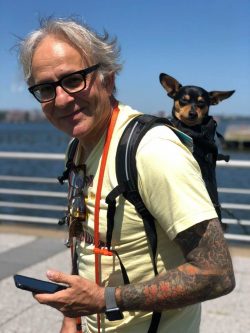
For More Photos, Click Here to Visit Paul’s Website: motelsign.com
And you can see more of his work in the Zephyr HERE.
To comment, scroll to the bottom of the page.
Zephyr Policy: REAL NAMES ONLY on Comments!
Don’t forget the Zephyr ads! All links are hot!

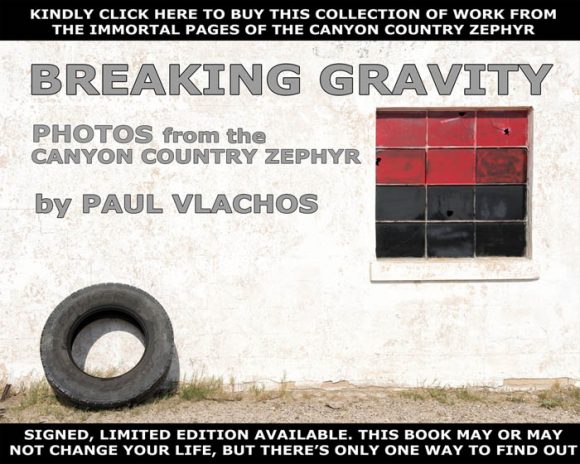


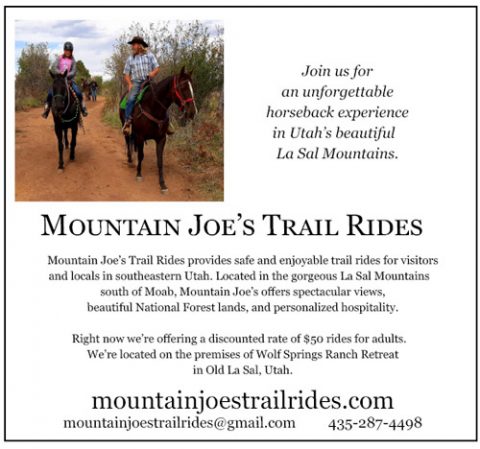
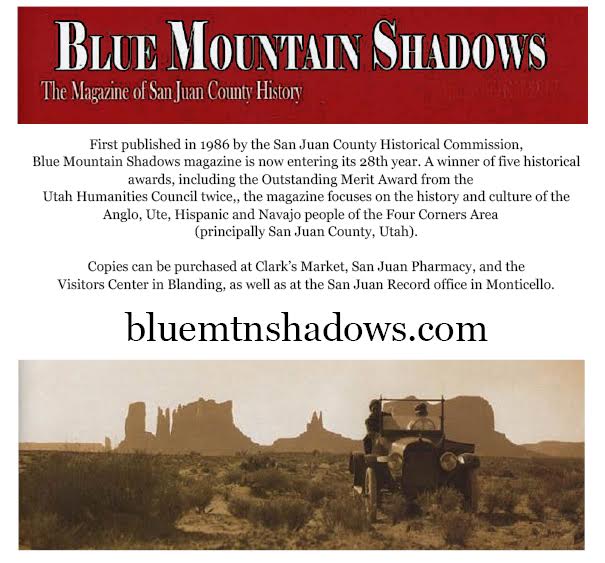


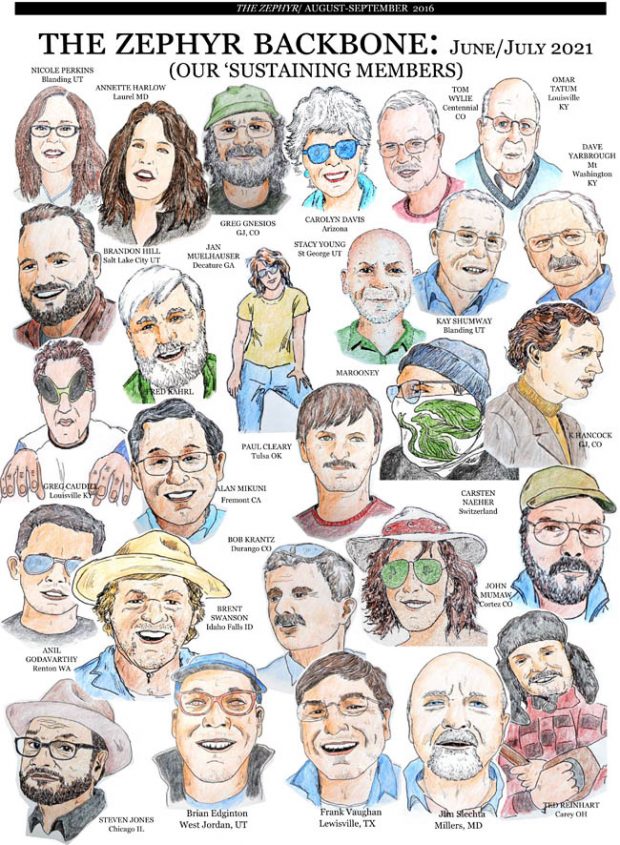
Another classic Vlachos story.